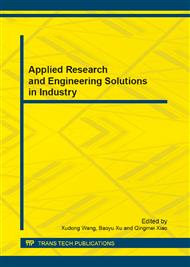p.215
p.220
p.226
p.231
p.235
p.241
p.245
p.249
p.254
Numerical Study on Thrust Generation Performance of Plunging Airfoils
Abstract:
In this paper, the effects of angle of attack, camber and camber location on propulsion performance of flapping airfoils undergoing plunging motion were numerically studied at Re=20000 and h=0.175. The unsteady incompressible viscous flow around four different airfoil sections was simulated applying the dynamic mesh. The results show that the time averaged thrust coefficient CTmean and propulsive efficiency η of the symmetric airfoil decrease with the increasing angle of attack, and the variation of CTmean is more obvious than that of CPmean. Both CTmean and η for NACA airfoils studied in this paper decrease with the increasing camber and the difference between the propulsion performances of different airfoils is not obvious, and the thrust generation and power of various NACA airfoils gradually increase during the downstroke and decrease during the upstroke. Under the same conditions, the airfoil with a further distance between the maximum camber location and the chord of the leading edge leads to higher propulsive efficiency.
Info:
Periodical:
Pages:
235-238
Citation:
Online since:
February 2013
Authors:
Price:
Сopyright:
© 2013 Trans Tech Publications Ltd. All Rights Reserved
Share:
Citation:


